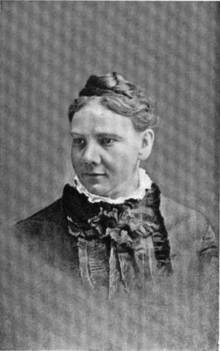
Rachel Foster Avery was active in the American women's suffrage movement during the late 19th century, working closely with Susan B. Anthony and other movement leaders. She rose to be corresponding secretary of the National American Woman Suffrage Association and played a key role in organizing meetings across the country.

Lucretia Mott was an American Quaker, abolitionist, women's rights activist, and social reformer. She had formed the idea of reforming the position of women in society when she was amongst the women excluded from the World Anti-Slavery Convention held in London in 1840. In 1848, she was invited by Jane Hunt to a meeting that led to the first public gathering about women's rights, the Seneca Falls Convention, during which the Declaration of Sentiments was written.

Harriet Jane Hanson Robinson worked as a bobbin doffer in a Massachusetts cotton mill and was involved in a turnout, became a poet and author, and played an important role in the women's suffrage movement in the United States.

Clara Dorothy Bewick Colby was a British-American lecturer, newspaper publisher and correspondent, women's rights activist, and suffragist leader. Born in England, she immigrated to the US, where she attended university and married the former American Civil War general, later Assistant United States Attorney General, Leonard Wright Colby. In 1883, she founded The Woman's Tribune in Beatrice, Nebraska, moving it three years later to Washington, D.C.; it became the country's leading women's suffrage publication. She was an advocate of peace and took part in the great peace conference at San Francisco during the exposition. She also spoke on behalf of the soldiers of the Spanish War. During the Spanish–American War (1898), she was officially appointed as war correspondent, the first woman to be so recognized.

Ada Chastina Burpee Bowles was a Universalist minister.

Mary Lathrap, pen name: Lena; known as "The Daniel Webster of Prohibition", was a 19th-century American author, preacher, suffragist, and temperance reformer. For 20 years, she was identified with the progressive women of Michigan who had temperance, purity, and prohibition as their watchwords, and the white ribbon as their badge. A licensed preacher for the Methodist Episcopal Church (1871), she served as president of Michigan's Woman's Christian Temperance Union (1882), co-founded the state's suffrage organization (1870), and worked on the amendment campaign (1874). She died in 1895, aged 56.

Lorenza Haynes was an American librarian, minister, school founder, suffragist, and writer.

Euphemia Wilson Pitblado was a Scottish-born American women's activist, social reformer, and writer. She traveled in Europe, Canada, and in the United States, crossing the Atlantic five times. Pitblado was a delegate to the National Woman Suffrage Association Convention in Washington, D.C., the New England Woman's Suffrage Association Conventions, the National Woman's Christian Temperance Union (WCTU) Conventions in New York City, Denver, and Chicago, and to the annual Woman's Foreign Missionary Conventions in Boston and Lowell, Massachusetts. Her principal literary works were addresses upon temperance, suffrage, missions, education, and religion.

Alice Moore McComas was an American author, editor, lecturer and reformer. She was a pioneer suffragist in California and served as president of the Los Angeles Equal Suffrage Association. During the various suffrage campaigns, McComas contributed articles to over seventy newspapers and magazines, and she was well known throughout the west as an educator and lecturer. She was accredited with being the first woman to conduct a department for women in a daily paper in California, and the first woman to address a state Republican ratification meeting. She was one of the earliest organizers of the Free Kindergarten Association and of clubs for working women, and was prominent in many movements for civic welfare. She was Associate Editor of The Household Journal of California and author of several books, among them The Women of the Canal Zone and Under the Peppers. McComas contributed travel sketches to many magazines. She died in 1919.
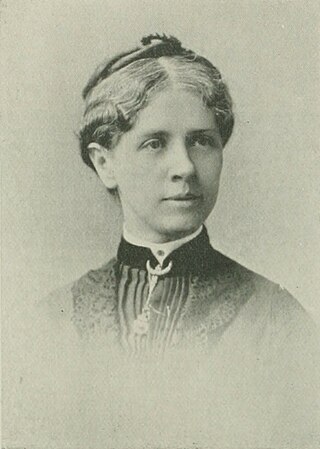
Adelaide Avery Claflin was an American woman suffragist and ordained minister.
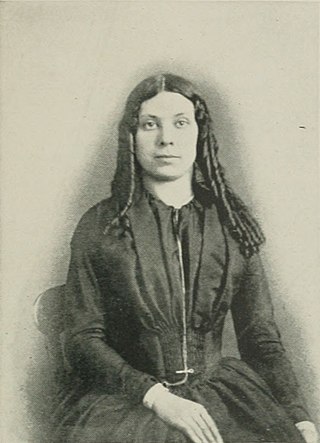
Augusta Harvey Worthen was an American educator and author of the long nineteenth century. She taught school, and wrote poetry and prose. Her greatest work was the history of her town, Sutton, published in two volumes in 1890; it was the first town history in the state of New Hampshire prepared by a woman.
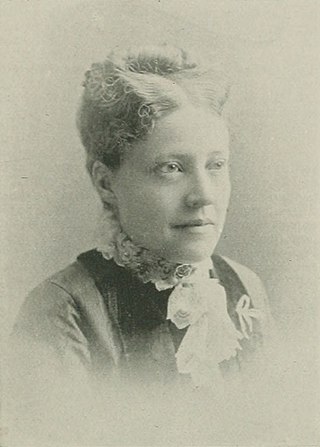
Emma A. Cranmer was an American temperance reformer, woman suffragist, and author. A talented suffrage speaker and prohibition representative, she served as president of the South Dakota Woman's Christian Temperance Union (WCTU) and the South Dakota Equal Suffrage Association. Some of her epigrams were published by the press. Cranmer died in 1937.

Maria Brace Kimball was an American elocutionist who taught, lectured, and wrote on the subject. She was an instructor in elocution and lecturer on dramatic literature in the American Academy of Dramatic Arts; lecturer on French theatre and dramatic literature in schools; teacher of elocution in Brearley School, New York City, 1883–92. She was the author of A Text Book of Elocution (1892) and A Soldier-doctor of our army, James P. Kimball (1917), as well as various contributions to periodicals.
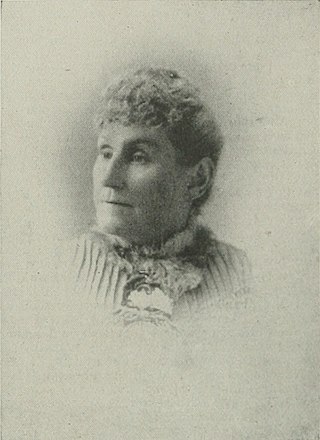
Emily Pitts Stevens was an American educator, temperance activist, and early San Francisco suffragist. She was the editor and publisher of The Pioneer, the first women’s suffrage journal in the West Coast of the United States, and was a co-founder of the California Woman Suffrage Association. In addition, she was a businesswoman, teacher, administrator, lecturer, and a founder of women's organizations. In San Francisco, Stevens started an evening school for working girls, and instituted the Seaman's League. After the organization of the Woman's Christian Temperance Union (WCTU) in California, she labored on its behalf. She also contributed to the columns of various newspapers, and lectured. Stevens died in 1906.
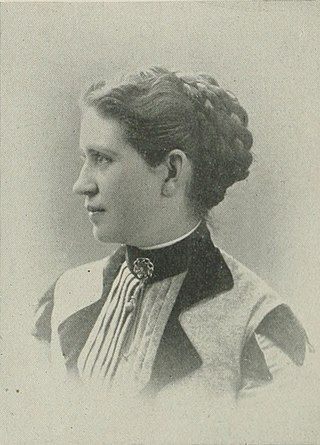
Louise Reed Stowell was an American scientist, microscopist, author, and editor. She was the University of Michigan's first woman teacher (1877–89), and the first woman appointed on District of Columbia Public Schools. She also served on the Board for the Girls' Reform School for District of Columbia. Stowell died in 1932.

Martha E. Sewall Curtis was an American woman suffragist and writer. She delivered notable lectures at the meetings of the National Woman Suffrage Association in Boston. For years, she edited a weekly woman's column in the News, of Woburn, Massachusetts, and was president of the Woburn Equal Suffrage League. For a number of years, she conducted in Boston a bureau of stenography and employed about 20 women. Her publications included Burlington Church (1885), Burlington (1890), and Ye olde meeting house (1909).
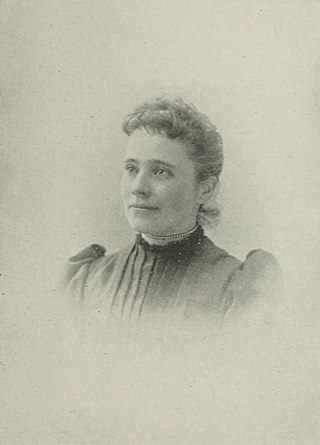
Mary L. Moreland was an American Congregational minister as well as a teacher and a writer. Among her publications can be counted Which, Right or Wrong? (1883) and The School on the Hill, Or, The New England Assembly (1885).

Sarah Maria Clinton Perkins was an American Universalist minister, social reformer, lecturer, editor, and author of Sunday school books. Early in life, she was engaged in educational work. She was involved in the temperance movement and advocated for women's suffrage. She was an early abolitionist and an early Prohibitionist. Perkins was a highly educated woman, a writer and speaker of rare force. Moving to Cleveland, Ohio, after being widowed in 1880, she was for many years actively connected as National Lecturer with the Woman's Christian Temperance Union (WCTU). She filled various other positions in reform associations including, President of Cleveland's Equal Franchise Club, and president of the Literary Guild of Cleveland.
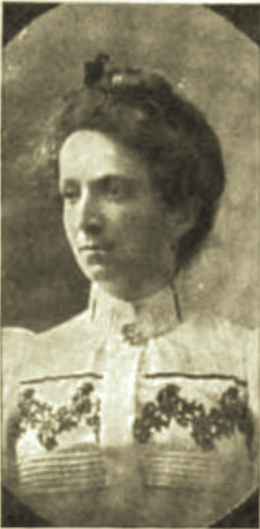
Jane Agnes Stewart was an American author, editor, and contributor to periodicals. She was a special writer for many journals on subjects related to woman's, religious, educational, sociological, and reform movements. Stewart was a suffragist and temperance activist. She traveled to London, Edinburgh, and Paris as a delegate of world's reform and religious conventions.
Nelle G. Burger was an American temperance leader. For 34 years, she served as president of the Missouri State Woman's Christian Temperance Union (W.C.T.U.).
